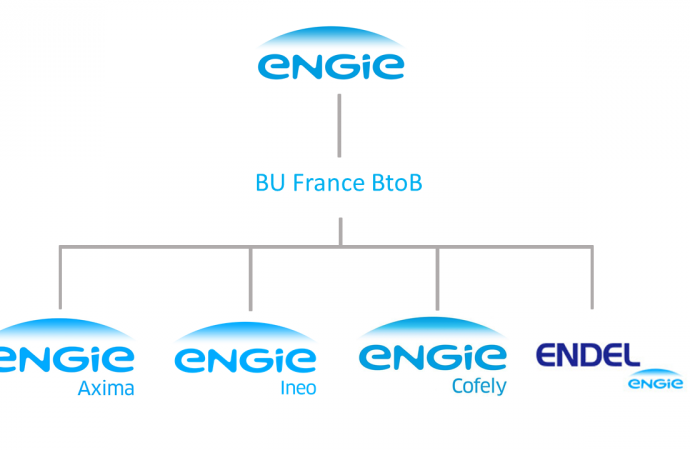The EU SHERHPA project identified components compatible with small capacity ammonia systems. This second article discusses the availability of heat exchangers, expansion valves and electronic valves, which is to a large extent determined by the absence of copper as a material used in the manufacture of such components.

The greatest obstacle to the commercial introduction of small capacity ammonia systems has been the lack of components specifically designed for these applications. Therefore, the first step during the EU SHERHPA project, which developed a small capacity water to water heat pump, was to identify components designed for other applications which would also be suitable for small-scale ammonia systems.
While the previous ammonia21.com article focused on compressors, the current article considers the market availability of heat exchangers, expansion valves, electronic valves and capillary tubes as reported in the latest IEA Heat Pump Newsletter.
Heat exchangers
For the application with ammonia, a low charge of refrigerant is desired, which can be achieved primarily by the use of indirect systems. In such compact systems, the main part of the refrigerant is in the heat exchangers, and therefore to achieve a low total charge the heat exchangers should be chosen to have the lowest internal volume possible. Heat exchangers for HFC refrigerants are frequently designed with copper tubing or copper surfaces, and are therefore not suitable for use with ammonia. Nonetheless, there are other available options that are compatible with ammonia:
Expansion devices
Most heat pumps in the 3-10 kW size range use thermostatic expansion valves. Such valves are normally designed specifically for a given refrigerant. However, finding a valve designed for ammonia for capacities below 15 kW constituted a problem during the SHERHPA project. The smallest ammonia thermostatic expansion valve found on the market was Danfoss TEA 20, a valve designed for a wide range of capacities, from about 3 kW to 28 kW, which is achieved by selecting one out of several possible orifices. However, given that this valve had clearly been designed for larger systems, it was found not to perform well in the system, as its large mass of valve housing and bulb may have had a negative influence on the stability of the system.
Electronic valves
The Italian manufacturer Carel introduced a small electronic valve suitable for use with ammonia a few years ago. This needle valve, made entirely of stainless steel and regulated by a small canned stepping motor, had no electric parts in contact with the refrigerant. An additional feature of this valve was that it was bi-directional, which made it suitable for heat pumps used for cooling in the summer time. This valve was tested in the prototype heat pump with some success. However, the valve design was later changed by the manufacturer, so that the needle of later models was made of brass, which is not compatible with ammonia. Although the electronic driver may still be used, the project was not able to find a valve suitable for low capacity with ammonia that can be connected to this driver.
Capillary tubes
Capillary tubes are frequently used as expansion devices in refrigerators, freezers and low capacity air conditioning systems. The project proposed the use of capillary tubes as a potential viable option for low-charge heat pumps as long as it is designed in the correct way and pointed out the need for further investigation in this area.
While the previous ammonia21.com article focused on compressors, the current article considers the market availability of heat exchangers, expansion valves, electronic valves and capillary tubes as reported in the latest IEA Heat Pump Newsletter.
Heat exchangers
For the application with ammonia, a low charge of refrigerant is desired, which can be achieved primarily by the use of indirect systems. In such compact systems, the main part of the refrigerant is in the heat exchangers, and therefore to achieve a low total charge the heat exchangers should be chosen to have the lowest internal volume possible. Heat exchangers for HFC refrigerants are frequently designed with copper tubing or copper surfaces, and are therefore not suitable for use with ammonia. Nonetheless, there are other available options that are compatible with ammonia:
- Plate heat exchangers: The plate heat exchanger is a very compact type of heat exchanger. In small to medium-size heat pump and refrigeration systems with HFC and HCFC as the refrigerant, it has been common for the last 15 years to use brazed plate components, where normally the brazing metal is copper. However, for special applications, nickel is used as the brazing material, which is fully compatible with ammonia. Several companies manufacture nickel-brazed plate heat exchangers.
- Welded heat exchangers: Alfa Laval has introduced a new type of fully welded heat exchangers called Alfa Nova. This type contains only stainless steel and is thus fully compatible with ammonia.
- Spiral-type heat exchanger: Another interesting type of heat exchanger for small capacity ammonia systems is the spiral-type heat exchanger, manufactured by Spirec. This is a fully welded stainless steel heat exchanger used for many different applications. One important advantage is that the flow is not divided into parallel channels as in the plate heat exchangers.
Expansion devices
Most heat pumps in the 3-10 kW size range use thermostatic expansion valves. Such valves are normally designed specifically for a given refrigerant. However, finding a valve designed for ammonia for capacities below 15 kW constituted a problem during the SHERHPA project. The smallest ammonia thermostatic expansion valve found on the market was Danfoss TEA 20, a valve designed for a wide range of capacities, from about 3 kW to 28 kW, which is achieved by selecting one out of several possible orifices. However, given that this valve had clearly been designed for larger systems, it was found not to perform well in the system, as its large mass of valve housing and bulb may have had a negative influence on the stability of the system.
Electronic valves
The Italian manufacturer Carel introduced a small electronic valve suitable for use with ammonia a few years ago. This needle valve, made entirely of stainless steel and regulated by a small canned stepping motor, had no electric parts in contact with the refrigerant. An additional feature of this valve was that it was bi-directional, which made it suitable for heat pumps used for cooling in the summer time. This valve was tested in the prototype heat pump with some success. However, the valve design was later changed by the manufacturer, so that the needle of later models was made of brass, which is not compatible with ammonia. Although the electronic driver may still be used, the project was not able to find a valve suitable for low capacity with ammonia that can be connected to this driver.
Capillary tubes
Capillary tubes are frequently used as expansion devices in refrigerators, freezers and low capacity air conditioning systems. The project proposed the use of capillary tubes as a potential viable option for low-charge heat pumps as long as it is designed in the correct way and pointed out the need for further investigation in this area.
MORE INFORMATION
Related stories





